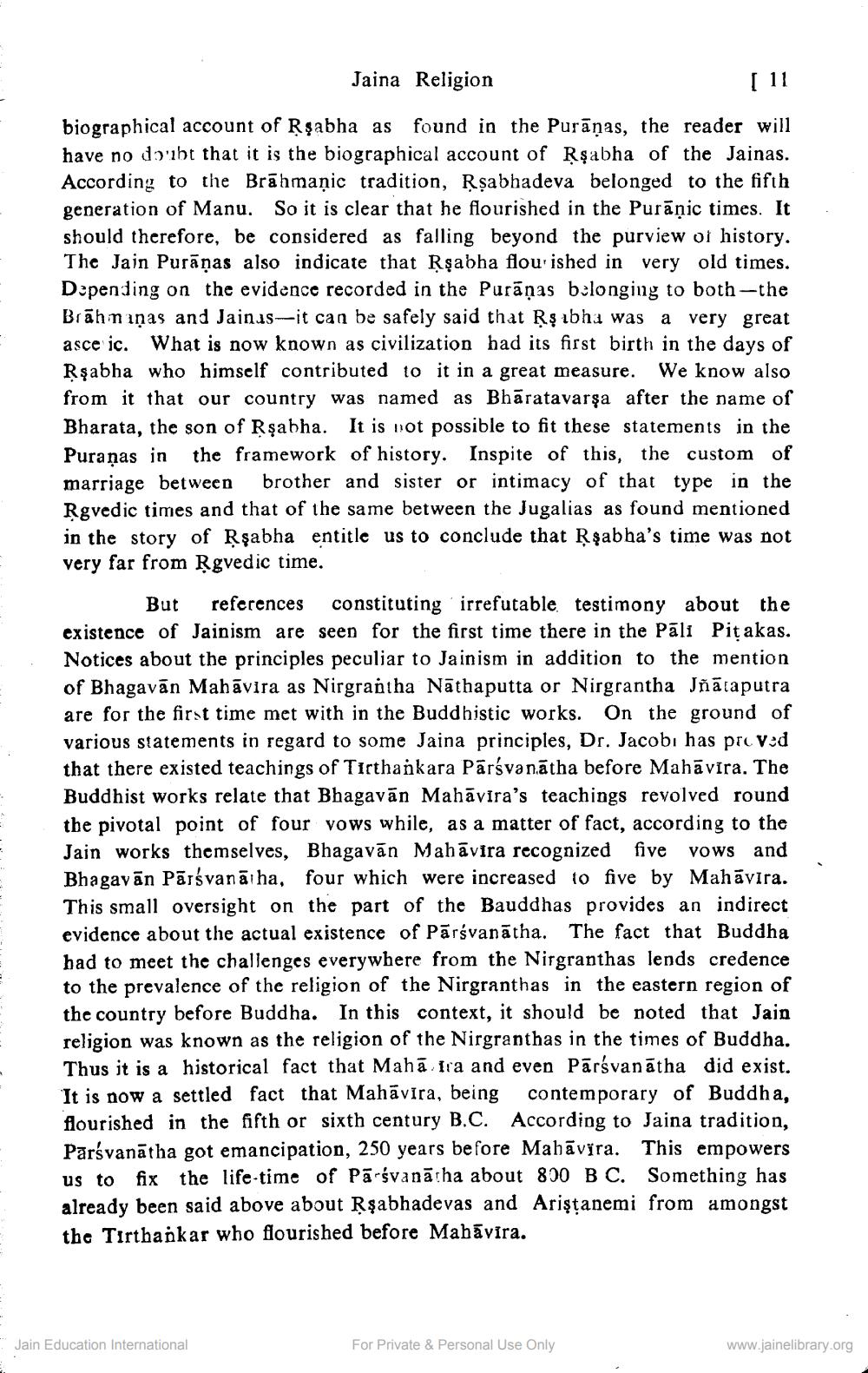________________
Jaina Religion
[11
biographical account of Rşabha as found in the Purāņas, the reader will have no doubt that it is the biographical account of Rşabha of the Jainas. According to the Brāhmaṇic tradition, Rşabhadeva belonged to the fifth generation of Manu. So it is clear that he flourished in the Purānic times. It should therefore, be considered as falling beyond the purview of history. The Jain Purāņas also indicate that Rşabha flourished in very old times. Depending on the evidence recorded in the Purāņas belonging to both-the Brāhniņas and Jainus-it can be safely said that Rş bha was a very great asce ic. What is now known as civilization had its first birth in the days of Rşabha who himself contributed to it in a great measure. We know also from it that our country was named as Bhāratavarşa after the name of Bharata, the son of Rşabha. It is not possible to fit these statements in the Puranas in the framework of history. Inspite of this, the custom of marriage between brother and sister or intimacy of that type in the Rgvedic times and that of the same between the Jugalias as found mentioned in the story of Rşabha entitle us to conclude that Rşabha's time was not very far from Rgvedic time.
But references constituting irrefutable testimony about the existence of Jainism are seen for the first time there in the Pāli Pitakas. Notices about the principles peculiar to Jainism in addition to the mention of Bhagavān Mahavira as Nirgrantha Nathaputta or Nirgrantha Jñātaputra are for the first time met with in the Buddhistic works. On the ground of various statements in regard to some Jaina principles, Dr. Jacobi has proved that there existed teachings of Tirthankara Pārsvanātha before Mahāvīra. The Buddhist works relate that Bhagavān Mahāvira's teachings revolved round the pivotal point of four vows while, as a matter of fact, according to the Jain works themselves, Bhagavān Mahāvira recognized five vows and Bhagavān Pārsvanālha, four which were increased to five by Mahāvira. This small oversight on the part of the Bauddhas provides an indirect evidence about the actual existence of Pārsvanātha. The fact that Buddha had to meet the challenges everywhere from the Nirgranthas lends credence to the prevalence of the religion of the Nirgranthas in the eastern region of the country before Buddha. In this context, it should be noted that Jain religion was known as the religion of the Nirgranthas in the times of Buddha. Thus it is a historical fact that Mahā ira and even Pārsvanātha did exist. It is now a settled fact that Mahāvira, being contemporary of Buddha, flourished in the fifth or sixth century B.C. According to Jaina tradition, Pārsvanātha got emancipation, 250 years before Mahāvira. This empowers us to fix the life-time of Pārsvanātha about 800 BC. Something has already been said above about Rşabhadevas and Ariştanemi from amongst the Tirthankar who flourished before Mahāvira.
Jain Education International
For Private & Personal Use Only
www.jainelibrary.org




